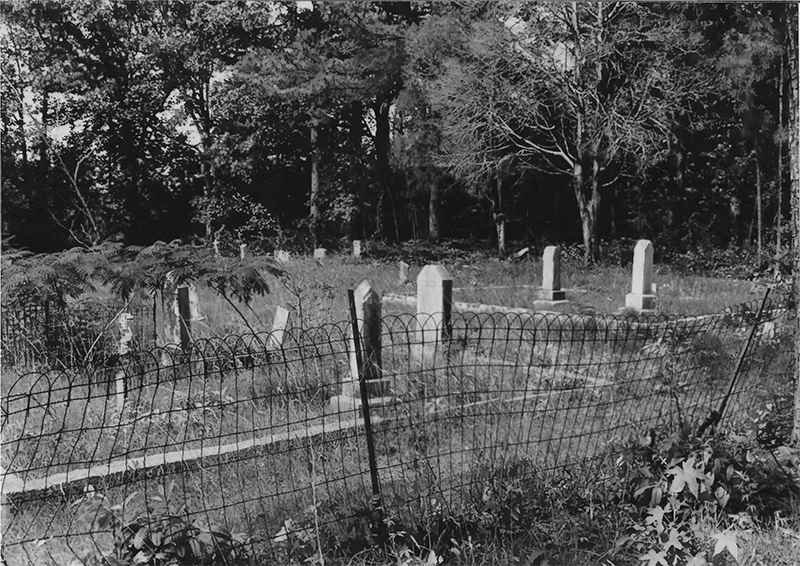Search Alabama Death Records
 Alabama Newspapers, Full Search (1813-2018), 150 titles
Alabama Newspapers, Full Search (1813-2018), 150 titles Alabama Obituary Search, (1824-current)
Alabama Obituary Search, (1824-current) Alabama Birth Records Database, (1813-1999)
Alabama Birth Records Database, (1813-1999)
Blocton Italian Catholic Cemetery Records
West Blocton, Bibb County, Alabama
 |
| Blocton Italian Catholic Cemetery |
GPS: 33.112949, -87.113506
Published: May 5, 2016
Total records: 8
Directions: From the town of West Blocton, head east along Blocton Bypass (Highway 24). Turn right (south) on Primitive Ridge Rd, and bear right. Within 400 ft turn right, and the cemetery lies another 200 ft.
Blocton Italian Catholic Cemetery was placed in the National Register of Historic Places on April 22, 1999.
History
In the late 19th Century, hundreds of Italians immigrated to Bibb County, Alabama to work in the coalmines of the Tennessee Coal and Iron Company (TCI). In spite of segregation and discrimination, these immigrants established a thriving and vibrant community in Blocton, Alabama. In addition to their own community known as Little Italy, the Italian immigrants founded St. Francis of Assisi Church and later, the the Catholic cemetery.
Blocton Italian Catholic Cemetery was established in 1896 and consecrated in 1901. It was used until 1970. The cemetery is located in what was then the coal mining community of Blocton, a town developed by TCI. To the north of the cemetery lay Hill Creek and to the east, the railroad tracks of the Louisville and Nashville, Mobile and Ohio, and Great Southern Railroads. Originally, the approach road for the cemetery lay to the east, winding down the hill, beneath the railroad bridge of the Mobile and Ohio railroad, to St. Francis Catholic Church (demolished) on Gunlock Hill. Little Italy, the immigrant's separate community, was located northeast of the cemetery, straddling a railroad spur which served the Klondike Mine and TCl's #3,6, and 9 mines.
The Italian Catholic Cemetery contains approximately 86 monuments of modest range and variety, representing over 100 Italian family names. Headstones include materials of primarily granite and concrete with some marble. The majority of monuments are simple headstones (some with accompanying footstones) although one does find smail obelisks. While most gravemarkers reflect the density and embellishment representative of smail late 19th and early 20th century cemeteries in primarily rural areas, the Blocton Italian Catholic Cemetery contains a majority of markers with epitaphs in Italian. Markers are embellished with Christian symbols such as bibies, flowers, trees, vines, doves, lambs and crosses. A particular popular motif is sets of open gates, which appear on approximately a dozen headstones. Also, at least five markers (those of the Torreano and Columbini families) still retain photographic images of the deceased, which have been placed behind protective clear glass coverings. Unfortunately, some of these images have been removed either by descendants of the family or vandals.
With the Italian community's association with TCI and coal mining, many of the monuments are embellished with mining symbols such as a cap, pick and shovel. Often these same stones carry the words "morto nella mina", which translated means "died in the mines". Unfortunately, none of the monuments in the Blocton Italian Catholic Cemetery bear any stonecutter's mark of any identification denoting the place of manufacture. It would seem logical that some of the monuments may have been crafted by a number of talented Italian stonecutters who resided in Birmingham around the turn of the century but there is no historical documentation to confirm this assumption. While the cemetery was almost exclusively for Italian Catholics, one marker denotes a different nationality. A small obelisk reads "Julian Matten, 1870-Belgium, 1915-Piper".
Although TCI closed its mining operation in 1928, the cemetery was used up through the 1960s. In the 1940s, the cemetery became the final resting-place for Italians who died while serving their country in World War II. Willie Burnetti's monument notes that he was "killed in action on Lazon, March 22,1945.1 have fought a good fight. I have finished my course. I have kept the faith." Brunetti's sister was interred in the cemetery in 1952 and his two parents in the 1960s. The most recent marker, that of Domenico Srunelli, was laid in 1970.
Today, the Blocton Italian Catholic Cemetery is cleaned periodically by concerned volunteers and citizens of the town of West Blocton. Although occasionally overgrown, the cemetery retains its original character and represents a rural cemetery of the late 19th and early 20th centuries. The cemetery is the place most importantly associated with the Italian immigrant settlers and provides a tangible link with their contributions.
Cemetery Records
Records below were transcribed from photographs of tombstones submitted to the National Register of Historic Places.
Brunetti, Rosa
Brunetti, Willie
Castelli, Elizabeth, b. 1864, d. Dec 15, 1902, age 36, robbed and murdered, wife and mother
Colombini, Arthur, b. Feb 28, 1910, d. Nov 3, 1935
Colombini, Virgil A., b. Jan 26, 1934, d. Mar 11, 1936
Lanzi, Celeste, b. Dec 27, 1874, d. Nov 10, 1937
Lanzi, Speranza, b. Jun 19, 1886, d. Aug 15, 1928
Nucci, Nargiso, d. Jul 7, 1908, Blocton, AL, age 52 years
These are only a fraction of the burials at the cemetery. The Bibb County ALGenWeb has a more complete list found here.
Browse More Cemetery Records
Search Alabama Cemeteries
Submit a Transcription
Help genealogists worldwide research their family history!
- No cost to publish your transcription- You retain all rights to your work
- No one can edit, change, or delete your work

